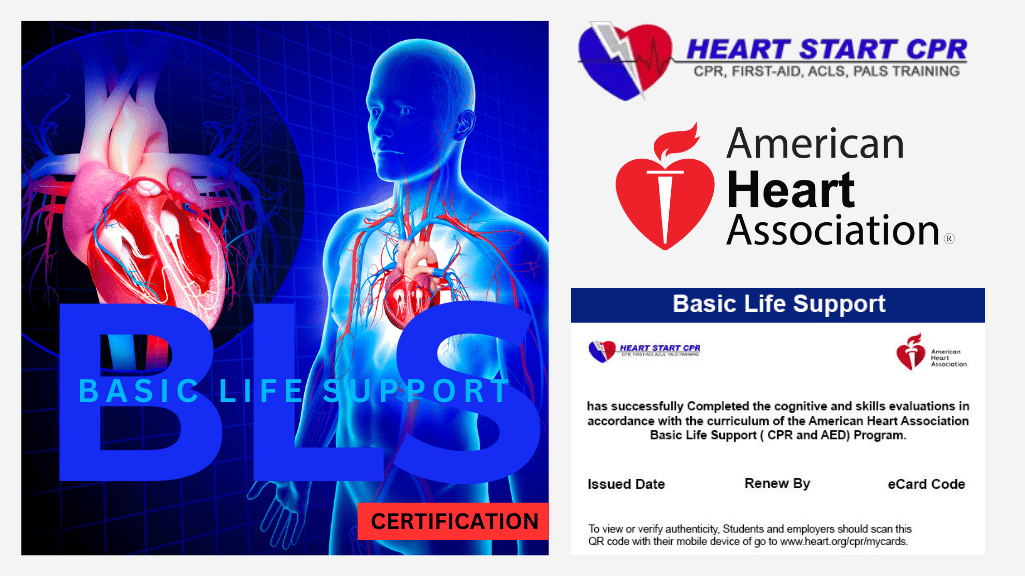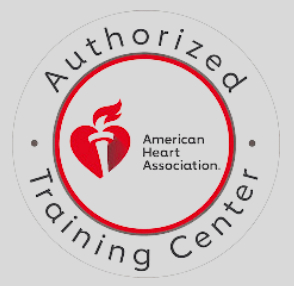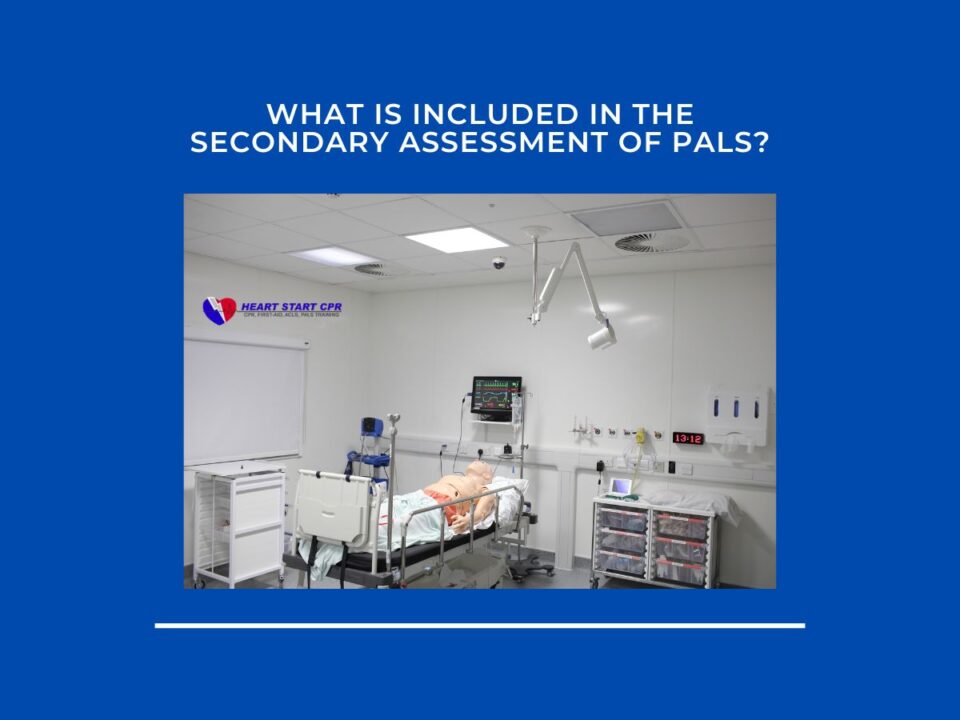
Does CPR Break Ribs?
July 5, 2023
What is BLS Certification? Basic Life Support Skills for Everyone!
July 24, 2023Table of contents
- Understanding CPR Courses
- Online CPR Certification Course
- Onsite CPR Certification Course
- Comparison: Online vs Onsite CPR Certification
- How to Select the Best CPR Course for Your Needs?
- Conclusion
- People Also Asked
- Is Online CPR Certification as effective as In-Person CPR?
- What is the cost difference between online and in person CPR Certification?
- What is the most widely accepted CPR certification between Online and In-person?
- Which CPR Certification Course is preferred by employers between Online and In-person?
- What is the validity of online and In-person CPR Certification?
Have you ever wondered what to do when someone collapses suddenly and isn’t breathing? It’s called CPR, short for Cardiopulmonary Resuscitation. Now, there are two types of CPR courses available: online and in-person. Here we will discuss which one is right for you. Online vs Onsite CPR Certification:
Understanding CPR Courses
CPR skills are life-saving techniques used in emergencies when someone’s heartbeat or breathing has stopped. Trust me, it’s like being a superhero in real life! Now, CPR training teaches you how to do it right. Just like you wouldn’t fly a plane without training, you wouldn’t want to do CPR without learning how to do it properly first.
Basically who needs a CPR course?
Performing CPR is a basic life support skill that can come in handy anywhere and at any time. Worst case scenario: drowning, cardiac arrest, choking, having pulse but not breathing, or not breathing normally. During these cases, a rescuer should deliver high-quality CPR to the victim.
Other than normal individuals CPR courses are needed by healthcare providers and non-medical personnel:
- Firefighter
- Coaches and trainers
- Volunteers
- Construction worker
- Child care provider
- Electrician
- Flight attendant
- Lifeguard
- Nanny and babysitter
- Teacher and school staff
- Security guard
- Yoga teacher
- Social worker
Online CPR Certification Course
Online CPR training course is your convenience certification course that allows you to enroll anytime anywhere. IIt offers the flexibility to learn online at your own pace – you can rewind, pause, or repeat any part of the course until you nail it.
It usually comes with a wide range of resources, such as interactive videos, reading materials, and quizzes. It’s like having a digital library at your fingertips. In a nutshell, Online CPR courses are perfect for anyone seeking a convenient, self-paced, and budget-friendly way to acquire life-saving skills.
Includes:
- Same day certification
- Skills Check
- Cardiopulmonary Emergencies and Special Resuscitation Situations.
- Adult, Child, and Infant CPR.
- Deliver appropriate ventilations.
- Automated external defibrillators (AED) use and special considerations.
- Relief from Airway Obstruction (choking) for victims of all ages.
Pros and Cons of Online CPR Courses
There are several advantages of taking your class online but it comes with some drawbacks as well. Some of the Pros and Cons of Online CPR Courses are:
Pros
- Online Classes are extremely flexible and convenient. The participant can enroll from anywhere at any preferred time without any hassles of traveling to the training center.
- The cost of Online CPR Certification is relatively cheaper than classroom-based CPR certification due to various reasons like no additional cost of the physical training center, and more participants can enroll at the same time.
- You can learn at your own pace by going through the course materials provided on the online platform.
- It is equally recognized as classroom-based CPR Certification training and is also accredited by a renowned organization like the American Heart Association.
Cons
- It lacks hands-on practice in applying the skills in real-life scenarios.
- There is missing of one-to-one feedback from instructors while taking the online training.
- Online classrooms limit interaction with other students and lack the opportunity to network with new individuals.
Who Should Enroll Online CPR Certification Course?
Well, online CPR trainings are awesome on their own and provide you the flexibility of learning basic life support skills.. Here is the list of those who may enroll in online BLS certification courses:
- Busy Personnel: If you’re juggling work, studies, or family responsibilities, and finding time is like searching for a needle in a haystack, then online BLS certification training is perfect. You can learn whenever and wherever it suits you best.
- Self-paced Learners: If you enjoy learning at your own rhythm, then online is the way to go. You get to pause, repeat, or slow down the course as needed.
- Rural or Remote Residents: If your home is far from urban centers and getting to a traditional class feels like going on a long, tiring journey, online courses can bring the training to you.
- Budget-Conscious Folks: If you’re looking to learn without breaking the bank, online CPR class typically cost less than their onsite counterparts.
Recommended for: MDs, RNs, EMTs, Dentists, and Medical Personnel with busy schedules.
Working Method of Online CPR Courses
Online CPR courses are usually flexible in time and place, as the classes are divided into several modules or segments. Thus, the participants can learn the skills at their preferred time and location. It is extremely convenient, and all the course materials can be accessed at any time from the Internet. With unrestricted access to the coursework, you can take your time, finish all modules at once, and review them to refresh your knowledge. All the classes provided at Heart Start CPR follow the guidelines of the American Heart Association. Your digital certificate and two-year certification card will be issued upon completion of your course.
Related Online Courses
- Online BLS Certification
- Online Advanced Cardiovascular Life Support (ACLS)
- Online Pediatric advanced life support (PALS)
- Stop The Bleed Certification
Onsite CPR Certification Course
Onsite CPR certification courses are much like an interactive workshop where learning comes to life! They’re perfect for those who thrive in a hands-on, classroom environment. If you’re the type who enjoys live demonstrations, practical exercises, and real-time feedback, an onsite CPR course is your ticket to learning.
It’s similar to a gym workout where a trainer guides you through each step, ensuring you master the technique right on the spot in-person instructor. Offline CPR Training also offer a chance to practice skills on mannequins and sometimes even high-tech simulators, making your learning experience as close to real-life scenarios as possible.
Plus, you get to interact and network with fellow learners, sharing experiences and tips. So, if you value immediate guidance, live practice, and peer interaction, an onsite CPR course could be your perfect fit.
AHA Approved CPR In-Person Class Includes:
- Same Day Certification
- AHA Authorized
- Gain Essential Skills
- Recognized Certification
- State-of-the-Art Facilities
- Flexible Schedule
- Expert Instructors
- Competitive Pricing
- Cardiopulmonary Emergencies and Special Resuscitation Situations.
- Adult, Child, and Infant CPR.
- Deliver appropriate ventilations.
- Automated external defibrillators (AED) use and special considerations.
- Relief from Airway Obstruction (choking) for victims of all ages.
Pros and Cons of In-person CPR Courses
Some of the Pros and Cons of In-person CPR Courses are:
Pros
- It is easier to communicate with the instructors on the topic or concept that you need clarification on.
- Opportunity to learn on the spot from the mistakes that occur from the confusion on certain concepts.
Cons
- It is relatively more expensive than an Online CPR Course.
- The participant must be present at the specified location at the given time mentioned by the organization for receiving the CPR training.
- Physical lessons involve several activities, including asking questions, which could be time-consuming. The course may not suit the person with a busy schedule.
Who Should Enroll Onsite CPR Certification Course?
- Hands-On Learners: If you’re the type who learns by doing, much like a craftsperson perfecting their skill, onsite CPR courses offer hands-on training and real-time practice, making them a great choice.
- Immediate Feedback Seekers: If you prefer immediate, in-person feedback, just like a coach cheering you on at a game, an onsite CPR course can provide that direct interaction with experienced and expert instructors.
- Networking Enthusiasts: If you enjoy meeting new people and learning from others’ experiences (think of it like joining a book club), onsite courses provide an opportunity for face-to-face interaction and networking.
- Traditional Classroom Lovers: If you thrive in a classroom ambiance with set schedules, like attending a school with a timetable, onsite training is the way to go.
- Residents Near Training Centers: If you live near a training center and transportation isn’t an issue then classroom CPR training is ideal for you.
Recommended for: Healthcare professionals, nursing students, EMT students, and EMS who need to know how to perform CPR and other lifesaving skills in various in-hospital and out-of-hospital settings.
Working Method of In-person CPR Courses
In-person CPR courses are more focused on providing a classroom-like environment with fixed schedules and a limited number of participants at a time. It is designed to be more personalized with long teaching hours. So, it might not be suitable for professionals with busy schedules. Instructors can use multiple ways to teach the same topic to ensure that all the participants fully understand the concept. The in-person classroom provides you with the opportunity for hands-on experience to conduct the skills that you learned to make yourself engaging and busy. You can practice CPR and learn AED usage on the mannequins to get yourself ready for real-life scenarios and make an impact on saving some lives.
Related Onsite Courses
Comparison: Online vs Onsite CPR Certification
Similarities between Online and In-Person CPR Certification:
Both CPR Certification Training provided at Heart Start CPR, online-based and in-person-based training follow the same guidelines and standards from the Occupational Safety and Health Administration (OSHA).
The validity period for both online-based CPR certifications and classroom-based CPR certifications is set to be two years so that the person can get updated and effective skills.
Online and in-person CPR training covers the same themes and abilities, including adult, child, and newborn CPR, choking relief, AED usage, first aid, and bloodborne infections.
Differences between Online and In-Person CPR Certification:
| Checklist | Online CPR Certification Class | In-Person CPR Certification Class |
| Flexibility | Online Classes are flexible to time | In-person classes have Fixed Schedules |
| Comfort | You can enroll in online classes from anywhere and learn the skills in your own comfort | Some may find an onsite class environment to be less comfortable or more distracting |
| Cost | Online classes are more economically efficient as they cost less than onsite certification classes with no traveling expenses | In-person classes include the cost of physical training centers, equipment, staff, and travel expenses. So compared to online classes, it could be a little on the expensive side |
| Learning Pace | Self-paced Learning | There is less control over the learning pace |
| Availability | A wider range of available dates and times | Limited Course availability especially in rural and remote areas |
| Revision Opportunity | It is easy to revisit your previous lectures or materials, helping you to reinforce your understanding | There are fewer opportunities to revisit specific points or topics |
| Progress | Immediate grading of quizzes and instant feedback allow quicker progress through the course | Potential wait times and might have to wait until the next available class |
| Interaction | Lack of peer interaction can be isolating and limit opportunities for learning from peers, discussing topics, and practicing together | Networking Opportunities with a chance to meet and interact with other professionals in your field |
| Practice | Lack of hands-on practice | Hands-on practice with real-time scenarios, instructor guidance, CPR mannequins, and AED trainers |
| Assessment | Practical Assessment Difficulties | Assess your skills as you perform them, providing valuable feedback to ensure you’re performing techniques correctly |
| Evaluation | Dependent on self-evaluation | Direct verification of skills |
| Accessibility | Easy access to course materials | Access to real-world equipment like AEDs and CPR mannequins. |
Flexibility
Online CPR training is a convenient certification course that allows you to enroll at any time and from any location. It offers flexibility to learn at your own pace where you can rewind, pause, or revise any element of the course until you understand it whereas In-person CPR classroom training is similar to an interactive classroom-like environment with fixed schedules that bring learning to life. They’re ideal for people who flourish in a hands-on educational setting.
Validity
CPR training certifications either Online based training or In-person Classroom-based training are normally valid for two years. Individuals who have previously completed CPR training may be eligible for recertification.
Availability
There are wider range of available dates and times for enrolling in online-based CPR Training classes whereas the course could have limited availability in rural and remote areas for the candidate interested in enrolling for an In-person CPR Training class.
Cost
Online CPR Classroom is more cost-efficient as compared to an In-person Classroom due to several factors like traveling expenses, the additional cost of the physical training center, and a limited number of seats for participants at the specified time schedules.
Interaction
Compared to Online CPR Certification Classes the In-person CPR Classroom is more interactive with a better chance of networking opportunities with like-minded people. Online CPR Certification Classroom lacks peer interaction and can be felt isolating sometimes and also lack of interaction may result in losing the opportunities to learn from peers.
Practice
In-person CPR Class provides you with hands-on experience and practice in real-time scenarios where you can get on-site instructor guidance and practice CPR on mannequins whereas online CPR training lacks hands-on practice due to the process of learning the skills over the internet with no means of testing the skills learned during its course duration.
Certification Acceptance
Certification acceptance is usually determined by the organization or employer’s unique needs and rules. It may differ between organizations and workplaces where some institutions and organizations readily recognize online CPR certification as a legitimate qualification, acknowledging its quality and rigor while others may prefer or demand certification gained through Classroom CPR Training owing to perceived benefits connected with in-person education.
How to Select the Best CPR Course for Your Needs?
The ideal CPR training for you will rely on a number of factors, including your purpose, budget, availability, learning preferences and style. Both the online and in-person CPR certification has validity of 2 years. Before selecting a CPR training, consider the following queries to ask yourself:
- Which method would you enjoy learning either in-person or online learning?
- What is your willingness to pay for a CPR course?
- How long are you planning to finish a CPR course?
- Why is a CPR certification necessary for you? Is it for a job, education, hobby, or something else entirely?
- What sort of certification is required for CPR? Is it sophisticated or basic? Is it intended for medical professionals or lay rescuers?”
Conclusion
Both the online and onsite CPR certification classes have their own advantages and disadvantages. They both offer the same level of certification. Before you choose the BLS training course make sure what type of BLS training certification does your employer consider. Consider if the onsite classes fit your schedule.
Heart Start CPR offers both American Heart Association (AHA) certified online BLS training and classroom BLS training courses for healthcare providers and community and workplace including recertification classes for BLS.
People Also Asked
Is Online CPR Certification as effective as In-Person CPR?
Yes, Online CPR certification can be effective than traditional in-class learning considering its positive sides like accessibility, adaptability and flexibility. However, the course materials, teaching professionals and accreditation might play an important role to make the online CPR course as effective as in-person learning.
What is the cost difference between online and in person CPR Certification?
Online CPR Course are relatively affordable and reduces the traveling expenses as compared to In-Person Classes. As, In-person learning consists capacity of limited number of participants at a time as compared to the Online CPR Classes.
What is the most widely accepted CPR certification between Online and In-person?
It generally depends on the specific organization or institution you are dealing with. However, both online and in-person CPR certifications can be widely accepted if they meet certain criteria such as accreditation from recognized institute like American Heart Association or American Red Cross with a proper course materials following their guidelines.
Which CPR Certification Course is preferred by employers between Online and In-person?
There is no exact answer to this but always verify the specific requirements of the organization or institution you need the certification for to ensure compliance. Some may prefer for the CPR Certification with hands-on experience, so on that note the In-person can be a better choice of Certification.
What is the validity of online and In-person CPR Certification?
Both Online and In-person CPR certification is valid for two years. After the expiry of the certificate, individuals can apply for the renewal within 30 days from the date of expiry. For the CPR Certification renewal, you can enroll in our recertification course at our San Ramon office.






